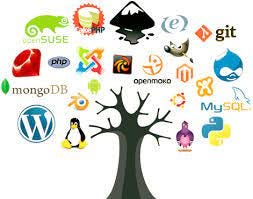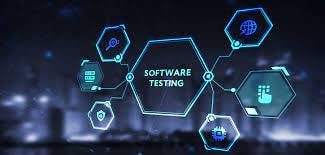What is software

Software refers to a collection of computer programs, data, and instructions that enable a computer system to perform specific tasks or functions. It encompasses both the programs themselves and the documentation and other supporting materials associated with them. Software can be categorized into two main types: system software and application software.
- System Software: System software serves as the foundation for a computer system, providing essential functionality and enabling the execution of other software. It includes operating systems (such as Windows, macOS, and Linux), device drivers, firmware, and utility programs. System software manages hardware resources, provides security measures, and facilitates communication between the user and the computer.

- Application Software: Application software refers to programs designed to perform specific tasks or activities for users. It includes a wide range of software applications, such as word processors, spreadsheets, graphic design software, video editing tools, web browsers, database management systems, and many others. Application software is created to meet various user needs and can be further classified into categories like productivity software, entertainment software, educational software, and more.
Software development is a complex process that involves designing, coding, testing, and maintaining software programs. Software engineers and developers utilize programming languages, development frameworks, and tools to create software applications tailored to specific requirements.
Software plays a crucial role in various industries and domains, such as business, healthcare, education, finance, entertainment, and transportation. It enables automation, improves efficiency, enhances communication, and supports decision-making processes.
Key aspects of software include:

- Functionality: Software should deliver the intended functionality and features to meet user requirements effectively. It should be designed to perform specific tasks efficiently and reliably.
- Usability: Good software should have a user-friendly interface and intuitive controls, allowing users to interact with it easily. Usability focuses on providing a positive user experience and minimizing the learning curve.
- Reliability: Reliable software should consistently perform its intended functions without errors or unexpected behavior. It should be stable, robust, and able to handle various scenarios and inputs.
- Performance: Software performance refers to its speed, efficiency, and resource usage. Well-designed software should execute tasks promptly, optimize resource utilization, and provide a smooth user experience.
- Security: Software security is crucial to protect data, prevent unauthorized access, and safeguard against vulnerabilities or threats. Software should incorporate appropriate security measures, such as encryption, authentication, and access controls.
- Scalability: Scalable software is designed to handle increasing workloads or accommodate growth in users and data volume. It should be flexible and capable of adapting to changing requirements and environments.
Software continues to evolve and advance, with new technologies and methodologies constantly emerging. Agile development, cloud computing, artificial intelligence, and mobile applications are just a few examples of trends shaping the software landscape.
Overall, software is a fundamental component of modern computing, enabling the creation of powerful and versatile applications that support a wide range of activities, from personal productivity to complex enterprise systems.

- Open Source Software: Open source software refers to software that is freely available and can be modified, distributed, and studied by users. It promotes collaboration, transparency, and community-driven development. Examples of open source software include the Linux operating system, the Firefox web browser, and the WordPress content management system.

- Software as a Service (SaaS): SaaS is a software delivery model where applications are accessed over the internet on a subscription basis. Instead of purchasing and installing software locally, users can use web-based applications hosted by the service provider. Examples of SaaS include customer relationship management (CRM) systems like Salesforce and productivity suites like Google Workspace.
- Software Development Life Cycle (SDLC): The SDLC is a structured approach to developing software applications. It typically involves stages such as requirements gathering, system design, coding, testing, deployment, and maintenance. Following the SDLC helps ensure a systematic and organized development process.

- Software Updates and Patches: Software updates and patches are released by developers to address bugs, improve functionality, enhance security, and introduce new features. Regularly updating software is important to ensure optimal performance and protect against vulnerabilities.
- Mobile Applications: With the rise of smartphones and tablets, mobile applications have become increasingly popular. Mobile apps are software applications specifically designed for mobile devices and can be downloaded and installed from app stores like Google Play and the Apple App Store.

- Software Testing: Testing is a crucial phase in software development to identify and resolve issues or defects. Various testing techniques, such as unit testing, integration testing, and user acceptance testing, are used to verify software functionality, performance, and user experience.
- Software Documentation: Software documentation includes user manuals, technical specifications, and other supporting materials that provide instructions, guidelines, and information about the software. It helps users understand and effectively utilize the software’s features and capabilities.
- Software Licensing: Software licensing governs the legal usage, distribution, and ownership rights of software. Different types of licenses exist, including proprietary licenses, open source licenses, and freeware licenses. Understanding licensing terms and complying with license agreements is important when using or distributing software.

- Software Maintenance: Software maintenance involves activities aimed at keeping software functional, up to date, and aligned with changing requirements. Maintenance tasks include bug fixes, performance optimization, security updates, and feature enhancements.
Software is a dynamic and ever-evolving field, with continuous advancements in technology, programming languages, and development methodologies. It plays a critical role in shaping our digital experiences, powering industries, and driving innovation across various sectors.

.jpeg)
.jpeg)
No comments:
Post a Comment